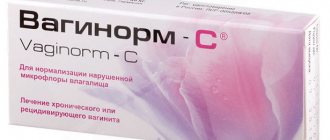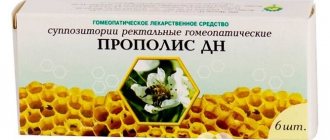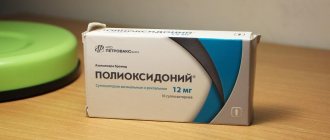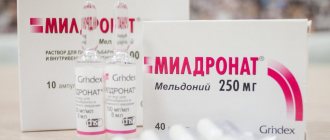In this article we will look at instructions and reviews for Osarbon candles. This product is a modern drug with a high degree of effectiveness. The drug is produced in Russia and is characterized as a powerful antimicrobial agent that can have a detrimental effect on protozoan microorganisms. Suppositories for intravaginal administration help eliminate pathogenic microflora, which parasitize against the background of a number of pathological processes in the organs of the urinary system, as well as the reproductive system. The medication is used mainly in gynecological practice, although it has a much broader effect.
Many people are interested in what diseases Osarbon suppositories are prescribed for.
Doctors, like patients, speak positively about the effect of the product on the body. The drug has virtually no contraindications and extremely rarely leads to the development of adverse reactions. According to reviews of Osarbon suppositories from experts, the drug is safe for the female body. Let's see if this is true.
Package
Osarbon (international nonproprietary name - acetarsol) is an antimicrobial and disinfectant used in gynecological practice (read: exclusively by the female half of the population). Osarbon can be called one of the “last of the Mohicans”, because. in modern medicine, the use of arsenic compounds (which is acetarsol) is minimized. But this fact should not alarm consumers - Osarbon rightfully occupies its narrow therapeutic niche in modern gynecology and still remains in demand.
Patient reviews
Antonina, 25 years old : “The doctor prescribed me suppositories against thrush. The discharge only intensified, but the itching went away and other discomforts too. A few days later, red rashes appeared in the groin area. It turned out to be an allergy."
Maria, 24 years old : “During pregnancy, the doctor prescribed Osarbon suppositories to me. I used three of them, and then I read that this is contraindicated. I got very scared and stopped using them. I didn’t go to that gynecologist again, even though the child was born healthy later.”
Release form
Osarbon has only one dosage form and is available in the form of vaginal suppositories. One suppository contains 250 mg of acetarsol and several excipients: glucose, boric acid and witepsol (the special role of glucose will be discussed below). Candles can have slightly different colors: from white to white with a cream or yellowish tint. Therefore, if the purchased candles are slightly different in color from those purchased previously, this does not mean that the drug does not meet the quality requirements or is falsified.
The candles are packaged in blisters of 5 pieces; in the secondary packaging (cardboard box) there may be one or two such blisters along with instructions for use for Osarbon.
Osarbon is produced at the facilities of the Russian pharmaceutical plant in Nizhny Novgorod.
Contraindications
Before starting to use Osarbon vaginal suppositories, an experienced specialist should take into account the following contraindications:
- Diabetes;
- Pregnancy;
- Lactation period;
- Kidney/liver failure;
- Hemorrhagic diathesis;
- Intolerance to any component of the drug.
Photo gallery of contraindications:
Lactation
Diabetes
Kidney failure
Liver failure
Hemorrhagic diathesis
Pregnancy
Osarbon's analogues
There are no complete chemical analogues of Osarbon for the active substance. There are several drugs that have similar therapeutic uses to Osarbon. These include:
- Betadine (Hungary);
- Hexicon (RF);
- McMiror (Italy);
- Fluomizin (Germany);
- Vagotil (Poland).
There is, however, another drug that contains acetarsol. By the way, it is produced by the same Nizhpharm OJSC. These are combined Osartsid suppositories, which, in addition to the above-mentioned substance, also contain sulfonamide.
Compound
It is produced in the form of suppositories intended for intravaginal administration. The drug is combined and includes several active components, including:
- Acetarsol.
- Dextrose.
- Boric acid.
In addition to the active ingredients, the composition is supplemented with auxiliary components, the purpose of which is to hold the drug in the required solid torpedo-shaped form.
One package contains five suppositories located in special contour cells. "Osarbon" can be purchased at a pharmacy after providing a doctor's prescription. The drug is stored for three years, after which it must be disposed of; it is not recommended to use suppositories after this period, since at best there will be no effect from their use.
Suppositories should be stored in a cool and dark place, out of reach of children. It is not recommended to freeze Osarbon, as in this case all the healing properties of the drug are lost. The drug should not be stored at temperatures exceeding 25 degrees, as suppositories may melt or lose their shape, which will make it impossible to use them for their intended purpose.
pharmachologic effect
The mechanism of action of acetarsol is based on its ability to radically interfere with the metabolic processes of some protozoa (Trichomonas, amoebas, spirochetes) by completely blocking their sulfhydryl enzyme systems.
Many clinicians, in their reviews of Osarbon, emphasize the importance of maintaining an acidic environment in the vagina. Such conditions are necessary in order to avoid absorption of acetarsol and subsequent intoxication of the body against the background of its systemic action. It was for this purpose that glucose was introduced into the drug. The fact is that glucose (sometimes dextrose is added to suppositories instead, which, in fact, is an equivalent replacement) is an excellent “appetizing” substrate for the life of lactobacilli of normal vaginal microflora. The latter create that sour “entourage” that prevents the resorption of acetarsol: they promote the process of glucose breakdown, resulting in the release of lactic acid. Another ingredient in Osarbon, boric acid, also functions to lower vaginal pH.
Instructions
Before use, the suppository is released from the contour packaging. Then the woman takes a lying position and inserts the suppository deep into the vagina. The standard dosage of the drug is one suppository per day. According to the instructions, you need to lie down for some time after inserting the suppository, so it is recommended to carry out the procedure before bed. The duration of use of Osarbon reaches ten days. The drug does not in any way affect the speed of psychomotor reactions, therefore, during treatment, it is allowed to drive a vehicle or perform work that requires increased concentration.
The use of suppositories requires prior consultation with a doctor, as the drug can cause some adverse reactions. It is recommended to store the drug taking into account the recommendations specified in the attached instructions. However, if the suppository has changed color or lost its shape, it cannot be used.
Indications for use of Osarbon
The instructions for Osarbon provide the only indication for the use of this drug: trichomonas colpitis. Patients should not be confused by such a narrow specialization of Osarbon, because... This disease is rightfully considered perhaps the most common form of inflammatory vaginal infections, sexually transmitted infections. As the name implies, colpitis is caused by the pathogenic bacterium Trichomonas.
The only indication for the use of Osarbon only indicates that there are more effective drugs for other diseases. But Trichomonas colpitis can rightfully be called Osarbon’s domain.
Similar drugs for thrush
If a woman has contraindications to the use of Osarbon suppositories or adverse reactions are observed during therapy, a medical specialist selects drugs of similar properties.
Of course, to an ordinary person who does not have a medical education, the names of medications mean nothing. Let's look at Osarbon's analogues in more detail.
Osartsid for the treatment of thrush
The drug simultaneously contains two active components. Medicine is prescribed for the treatment of trichomonas colpitis and candidiasis. In the latter case, effectiveness is achieved due to the inhibition of pathogenic microflora.
To get rid of a fungal infection, you need to undergo a course of treatment lasting ten days. One suppository is administered per day in the supine position. It is better to carry out the procedure before bedtime so that the active ingredients do not leak out.
Contraindications for use:
- Hypersensitivity to suppositories;
- Hemorrhagic diathesis;
- Impaired absorption of glucose in the body;
- Tuberculosis of any form;
- Pregnancy, lactation.
The sulfanilamide contained in the composition has a pronounced bacterial property; it inhibits the activity of bacteria and fungi. According to the annotation, in some cases side effects develop - jaundice, hepatitis, allergic reactions with skin manifestations - dermatitis, urticaria, rash, itching and burning of the skin.
Klion-D for the treatment of vaginal candidiasis
Klion-D suppositories are particularly effective in the treatment of vaginal candidiasis, as they directly have a negative effect on fungi. In other words, they have antifungal activity.
Due to local application, that is, intravaginally, a maximum concentration of active ingredients is observed in a short period of time. Directions for use: remove the tablet from the package, moisten it in warm liquid, and insert as deeply as possible.
It is not recommended for use in the following pathological conditions:
- Impaired liver and kidney function;
- Having an allergy to the components of the medication;
- Pregnancy, breastfeeding;
- Organic lesions of the central nervous system;
- Leukopenia.
Klion-D quickly inhibits the vital activity of fungi and is a fairly powerful synthetic drug, which in a number of situations leads to the development of negative phenomena. These include redness of urine, severe headaches, an acute attack of pancreatitis, and allergic rashes on the skin.
Some patients complain of stomatitis, dry mouth, changes in taste, and urinary incontinence. In case of an overdose, hallucinations, loss of consciousness, painful sensations in the abdomen, and repeated vomiting are observed.
Hexicon for candidiasis
This Osarbon analogue is used in combination with antifungal medications to treat thrush. It has a disinfectant and anti-inflammatory effect, relieves swelling of the inflamed mucous membrane.
Advantages of use:
- The local effect of the drug affects exclusively the source of inflammation;
- Rapidly absorbed;
- Eliminates harmful effects on the gastrointestinal tract;
- Easy and convenient to use;
- Minimum list of side effects.
All these advantages make it possible to prescribe medicine to get rid of a fungal infection. As a rule, it is recommended to administer one suppository every 24 hours. Therapeutic manipulation is carried out before bedtime. If a medical specialist has prescribed the administration of two suppositories, then they are administered in the morning and in the evening. After the procedure, you need to lie down for 30-40 minutes.
As practice shows, Osarbon and its analogs have not only indications, but also contraindications. Therefore, to get rid of thrush, they are used only under medical supervision. After therapy, the effectiveness of treatment must be assessed through laboratory tests.
Storage period and conditions
Osarbon should be stored at a temperature not exceeding 25 ° C in a place protected from direct sunlight.
The shelf life of Osarbon is 3 years from the date of issue.
Can't.ReplyReplyReplyReply
Lena, no one can know for sure whether Osarbon harmed the baby or not until he is born. It’s good that the screenings are normal, which means the risk is minimal.ReplyReply
Hello.
Suppositories are not used during menstruation; you must wait until it is completed.ReplyReply
Good afternoon.
If mycoplasma and ureaplasma are detected, neither you nor your husband require treatment. These are so-called commercial diagnoses. Reply Reply
Good afternoon.
Osarbon is not used for prophylactic purposes. Reply
Reviews from doctors
Magometova Marina Olegovna, gynecologist:
“These candles do not pose any danger to women. Some doctors prescribe them during pregnancy, which is a contraindication. I believe that this is unacceptable, because the drug Osarbon can cause harm to the fetus.”
Bronyuk Anna Viktorovna, gynecologist:
“I prescribe Osarbon vaginal suppositories to my patients against thrush and trichomonas colpitis, when other drugs do not show activity. It helps women and they are satisfied.”
Causes
Most often, vaginal candidiasis occurs in women who have already begun sexual activity, since their body has become “open” to many infections. But thrush can also occur in adolescence and after menopause. Causes and risk factors for thrush can be:
- decreased immunity (after illnesses, operations, immunodeficiency states, cancer);
- after prolonged and/or incorrect use of antibiotics, hormonal drugs, chemotherapy and radiation therapy;
- traumatic injuries to the reproductive system;
- diseases of the endocrine system, hyperglycemia, diabetes mellitus, adrenal dysfunction;
- chronic diseases of the genitourinary system;
- nutritional disorders, insufficient amounts of vitamins in the diet;
- for metabolic disorders;
- pregnancy and postpartum period;
- improper use of sanitary pads;
- synthetic or tight underwear.
Douching with boric acid
Douching is a medical procedure during which the vagina is irrigated with a solution of an antifungal, antiseptic, and antibacterial drug. To carry out therapeutic manipulations, a special bulb-syringe is used, as well as a pre-prepared solution of the drug. In addition to douching, the drug is also used for washing and taking sitz baths. At the same time, there is a danger of drying out delicate skin, causing irritation and secondary infection.
Gynecologists do not recommend using boric acid for douching
Previously, boric acid was used to sanitize the vagina and reduce the number of pathogenic and conditionally pathogenic microorganisms. Experts note that this is not the safest procedure and most modern gynecologists recommend refraining from this method of therapy, and, especially, self-medication.
Symptoms
One of the main symptoms that may lead you to believe that you are dealing with thrush is a whitish-cream-colored discharge of a curd consistency, which may be accompanied by itching and the smell of “sour milk with mushrooms.”
Itching may intensify during sexual intercourse, physical activity, wearing tight and uncomfortable underwear, and before menstruation. Redness of the external genitalia and difficulty urinating may also be observed.
The presence of symptoms and the degree of their manifestation depend on the form of the disease. Acute vaginal candidiasis can be detected in the first stages of examination, while chronic candidiasis can have subtle symptoms, so its determination can be complicated.
Thrush is diagnosed based on complaints, medical history, results of a gynecological examination, laboratory tests: by bacterioscopy (taking a smear) or doing a bacteriological examination. Additionally, the patient may be examined for the presence of other urinary tract infections.
Treatment
For local treatment of thrush, ointments, creams, vaginal suppositories, suppositories are used, for example:
- Miconazole (vaginal cream or suppositories);
- Clotrimazole (vaginal tablets);
- Ketoconazole (vaginal suppositories).
The chosen type of treatment must have antifungal properties to cope with the causative agent - the Candida fungus. It is worth noting that this type of treatment is quite effective in the early stages of the disease, in the treatment of acute forms of candidiasis.









